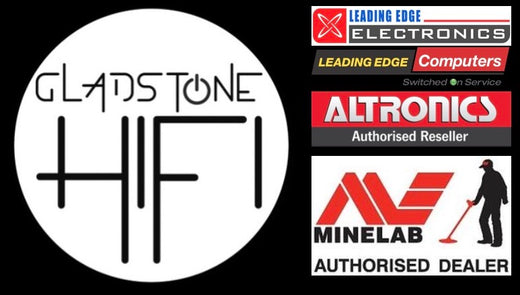The Micro:bit STEM robot car is an easy to program 2 wheel obstacle avoidance and line tracking robot. Coding your program is easy using the standard BBC Micro:bit software. It's the perfect introduction to robotics for children which can be self coded with instruction from teachers. It has been designed with a BBC micro:bit slot on board, this means a classroom may only need a few STEM robot cars to cater for multiple BBC boards. Each child can program and code their micro:bit, plug it in and then try it out in the robot car to see if it works. Wiring and construction has been designed to be as simple as possible. To control simply use any standard open source Bluetooth control app on a smartphone or tablet. It integrates ultrasonic and infra-red obstacle avoidance, line following, plus self control via Bluetooth. It is fitted with a passive buzzer for playing music tones, a module for controlling 18 RGB LED colours and a photo cell for detecting light intensity. It's also fitted with two RGB LEDs as directional movement indicators.
Requires 2 x 18650 lithium cell batteries (sold separately)
NOTE: The BBC micro:bit has been used for illustration purposes only and is not included. See accessories below.
Package Contents:
1 x Instruction booklet
1 x Acrylic 3pc chassis
1 x Micro:bit connection shield
1 x Ultrasonic sensor
1 x WS2812 RGB LED ring
2 x N20 motors with 43mm wheels
1 x Steel universal wheel
8 x M1.6 x 10MM round head screw
8 x M3 x 6MM round head screw
8 x M1.6 304 stainless steel nut
4 x Double pass M3 x 35MM hex copper pillar
1 x M3 x 10MM flat-head screw
1 x M3 Nickel plated nut
8 x M2 x 12MM round head screw
8 x M2 Nickel plated nut
1 x Phillips screwdriver
1 x USB cable
3 x Male to female jumper wire 10cm
4 x Male to female jumper wire 15cm
Features
- Works with BBC Micro:bit
- Micro:bit slot allows students to adjust and test code revisions
- Ideal for classroom & STEM workshop environments
- RGB LED light ring
- Easy wiring and construction
- Infra-red and ultrasonic based avoidance
- Line tracking capability
- Photo cell for light intensity detection
- Powered by long life 18650 lithium cells
- Bluetooth controllable
Downloads
Setup & Connecting
PDF Download
Lesson 1.0 - Passive Buzzer Control
Make Code | PDF Guide
Lesson 2.1 - RGB LED Experiment
Make Code | PDF Guide
Lesson 2.2 - RGB LED Variable Brightness Control
Make Code | PDF Guide
Lesson 3.1 - LED Neopixel Module Control Experiment 1
Make Code | PDF Guide
Lesson 3.2 - LED Neopixel Module Control Experiment 2
Make Code | PDF Guide
Lesson 3.3 - LED Neopixel Module Control Experiment 3
Make Code | PDF Guide
Lesson 3.4 - LED Neopixel Module Control Experiment 4
Make Code | PDF Guide
Lesson 4.1 - Photosensor Datalogging
Make Code | PDF Guide
Lesson 4.2 - Photosensor Demo
Make Code | PDF Guide
Lesson 5.1 - Robot Motor Driving Experiment 1
Make Code | PDF Guide
Lesson 5.2 - Robot Motor Driving Experiment 2
Make Code | PDF Guide
Lesson 6.1 - Line Tracking Sensor Datalogging
Make Code | PDF Guide
Lesson 6.2 - Line Tracking Sensor Display
Make Code | PDF Guide
Lesson 6.3 - Line Tracking Datalogging & Display
Make Code | PDF Guide
Lesson 6.4 - Line Tracking Smart Robot Demo
Make Code | PDF Guide
Lesson 7.1 - Ultrasonic Ranging Datalogging
Make Code | PDF Guide
Lesson 7.2 - Ultrasonic Follow Smart Robot
Make Code | PDF Guide
Lesson 8.1 - Infrared Obstacle Sensor Datalogging
Make Code | PDF Guide
Lesson 8.2 - Infrared Obstacle Avoidance Display
Make Code | PDF Guide
Lesson 8.3 - Infrared & Ultrasonic Avoidance Demo
Make Code | PDF Guide
Lesson 8.4 - Infrared & Ultrasonic Follow Smart Robot
Make Code | PDF Guide
Lesson 9.1 - IR Remote Datalogging
Make Code | PDF Guide
Lesson 9.2 - IR Remote Control Smart Robot Demo
Make Code | PDF Guide
Specifications
- Voltage: DC 5V
- Current: USB power supply or power supply with a capacity greater than or equal to 1A
- Maximum Power: maximum output power is 10W
- Operating Temperature Range: 0-50°C
- Dimensions: 120*90.7mm
- Environmental Attributes: ROHS






